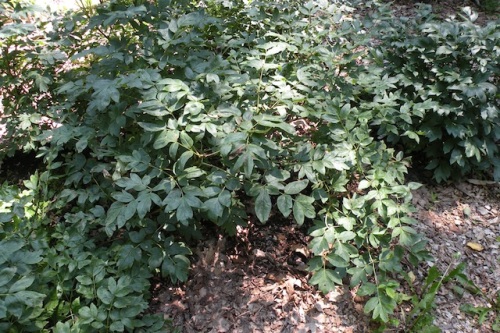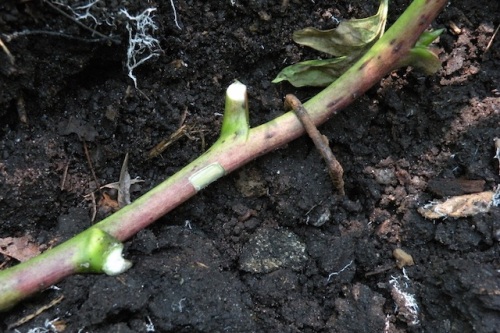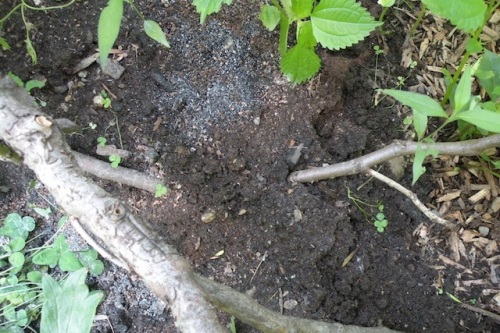Tree peony propagation by branch layering
Tree peonies are most often propagated by grafting or division. A third method is by branch layering. In addition to creating new clones, this technique can also be used to make for a lower growing tree peony with a spreading growth habit. Though tree peonies do not root as readily as most woody plants, if a living branch is buried beneath the soil, it will eventually form new roots. This may happen over one season or it may take several years. After the branch forms sufficient roots, it can be cut away from the mother plant. At Cricket Hill Garden, we have found that tree peonies with P. rockii genetics in their heritage root much more readily than tree peonies from other cultivar groups. If you want to attempt branch layering a tree peony, the best time to do it is either in the early spring before new growth commences or in the summer and early fall.
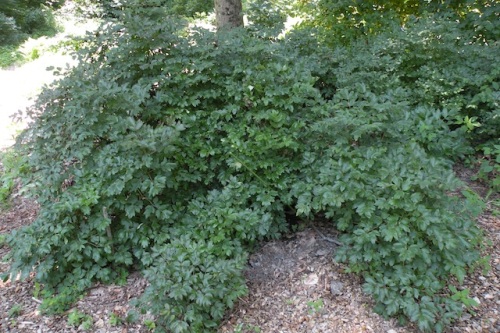
This P. rockii cultivar, ‘Black Tornado‘, is about 17 years old and now measures 11 feet wide. We have achieved this spreading growth habit by pinning new growth to the soil so that they form roots and then send up new shoots farther and farther away from the original base of the plant.
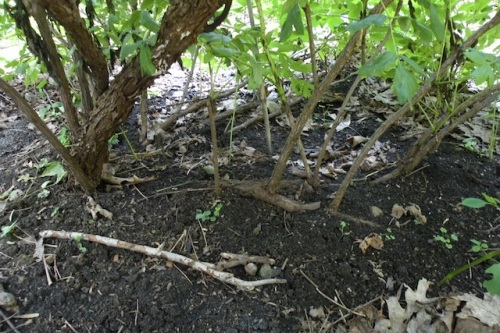
A look at the base of this plant shows how branches buried in the soil form roots and then grow new stems away from the original trunk of the plant.
It’s best to attempt branch layering on a tree peony which naturally has a lower growing or pendulous habit.
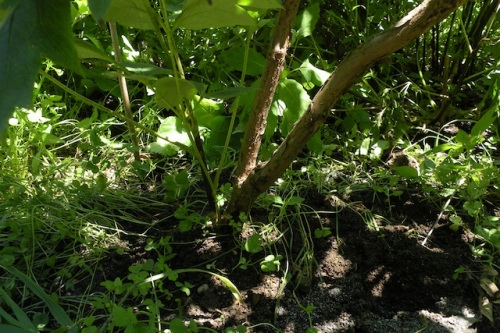
As a contrast, this tree peony has a much more upright habit. With only a few upright stems, this plant would not be an ideal tree peony to branch layer.
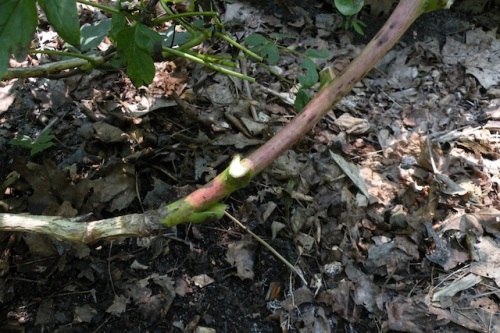
Remove three or four of the leaf stems on the area of the branch which will be buried. Be sure to leave the leaves on the top part of the branch which will remain above the soil.
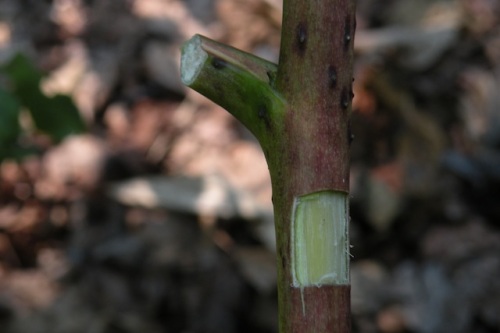
An optional step is to remove a patch of bark on the stem right below a new bud. During the summer, the bark on new growth will easily peel off. We have done many successful branch layers without removing the bark though some horticulturalists contend that removing the bark stimulates new root growth.

After securing the branch, cover it with soil and water deeply so that there are no air pockets around the branch.
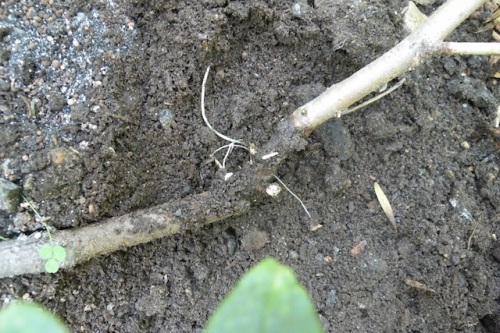
After digging away the soil, new white feeder roots are visible. This indicates that the layer has succeeded. If the purpose of this layer was propagation (rather than creating a spreading plant), this branch should be buried for another year before cutting it off from the main plant and replanting in a new location. This is because the root growth is not yet sufficient to support a whole plant.

